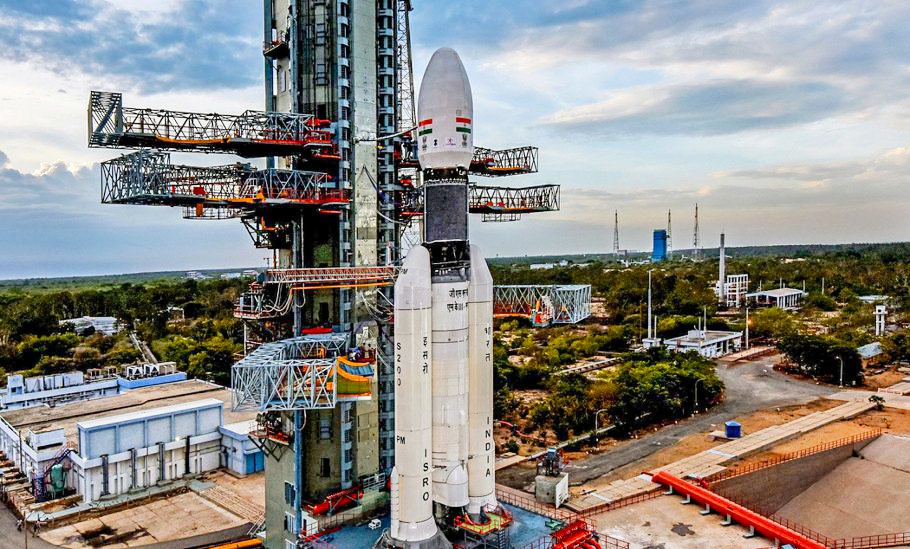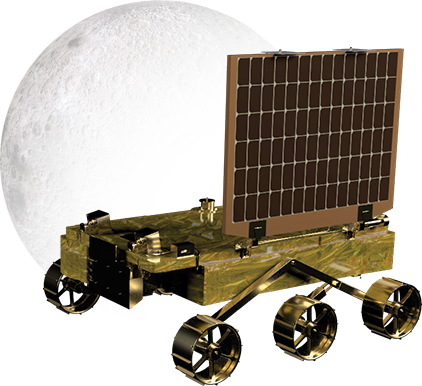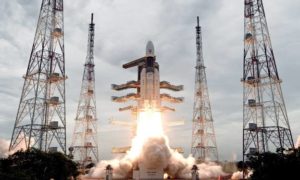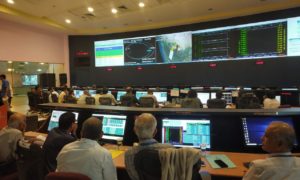
After a Last minute technical glitch, India’s Chandrayaan 2 is set to launch on July 22
The Indian Space Research Organisation (ISRO) has said that India’s second lunar mission, Chandrayaan 2 will be launched on Monday, July 22, 2019 at 14:43 hours Indian Standard Time (IST), from the Sriharikota island in Andhra Pradesh.
Chandrayaan 2 was earlier scheduled for launch on July 15, 2019 but was called off 56 minutes and 24 seconds before launch, due to some technical glitches.
The Rs. 1,000 crores mission will make India the fourth country to soft launch on moon after United States (U.S.), Russia and People’s Republic of China.
A tweet from ISRO read, “Chandrayaan-2 launch, which was called off due to a technical snag on July 15, 2019, is now rescheduled at 2:43 pm IST on Monday, July 22, 2019.”
Chandrayaan-2 launch, which was called off due to a technical snag on July 15, 2019, is now rescheduled at 2:43 pm IST on Monday, July 22, 2019. #Chandrayaan2 #GSLVMkIII #ISRO
— ISRO (@isro) July 18, 2019
The Chairman of ISRO – Kailasavadivoo Sivan has termed it as
“most complex mission ever undertaken by ISRO.”
The mission will focus on the lunar surface, search for water and minerals and will measure moonquakes.
The rocket weighing 640 tonne, has been officially named ‘Geosynchronous Satellite Launch Vehicle Mark 3 (GSLV Mk 3)’. It has been nicknamed ‘Baahubali’. The 44 metres long Baahubali will launch an orbiter, a lander ‘Vikram’ (named after ISRO founder and eminent Indian scientist Vikram Sarabhai) and a moon rover ‘Pragyaan’ into space.
The orbiter, which has a mission life of 1 year, will click images of the lunar surface and study the tenuous atmosphere. The lander will carry a 27 kg moon rover with instruments that can analyze the lunar soil. With a life shell of 14 days, Pragyan can travel upto ½ a kilometre from the lander and will send data and images back to Earth for analysis.

Besides, an official of ISRO has said that Chandrayaan 2 would have been a complete failure if they had launched it on the earlier scheduled date without addressing the technical snag.
Speaking on the occasion, the official said, “The problem was serious, but simple to resolve. Luckily, we caught the problem. Alertness, prayers and the good wishes of one billion Indians helped avert the mission’s total failure.” He further added, “An expert committee was constituted to analyze the issue and suggest remedial action.”
For the records, India’s first lunar mission, Chandrayaan 1 was launched in October 2008, which confirmed the presence of water molecules on moon, using radars. It was launched from Satish Dhawan Space Centre, at Sriharikota and included a lunar orbiter and an impactor.







